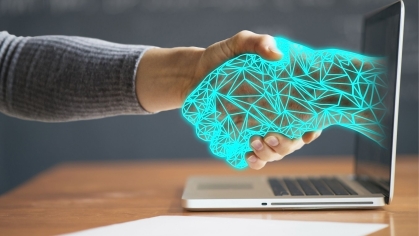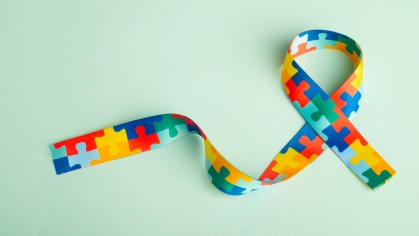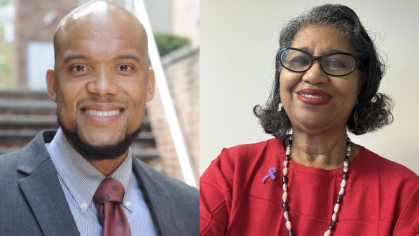How Social Workers Can Challenge Biases and Increase Awareness on Disability Independence Day
By Alison (Ali) Wetmur, MSW, LCSW
Though disability is all around us, Americans typically do not like to think about or consider disabilities. There are many reasons for this, from lack of authentic representation in media to fear that someone who is non-disabled will suffer a tragic accident and become disabled. A country that devalues disabilities is the world I was born into as a Deaf woman.
My journey as a disability rights scholar and my academic work at Rutgers School of Social Work are tightly entwined. However, for some time, I had no idea what I wanted to do with my life. Like many college students, when I arrived on campus for my undergraduate education at Drew University, I was not entirely sure what I wanted to do for a career. I wound up majoring in English with a minor in creative writing.
After I graduated, I wanted to explore the disabled part of my identity. I enrolled in an interpreter training program (ITP) at Ocean County Community College. I became fluent in American Sign Language, ASL, which was a second language for me. I was born deaf to hearing parents, like 90-95% of d/Deaf people (Cheng et al., 2019). The prevailing wisdom in the 1970s and 1980s was that if deaf children communicated using ASL, they would never be able to function or succeed in the “hearing world” (Hall, 2017). So, I knew no ASL before enrolling in the ITP, and I had never had friends who were like me: “different.” Learning ASL and connecting with my innate culture and identity as a Deaf woman propelled me to enroll in Rutgers’ MSW program. I found my purpose in life – working with and advocating for people with disabilities, especially d/Deaf and Hard of Hearing people.
After leaving Rutgers, I worked at the American School for the Deaf in West Hartford, CT, refining my ASL and clinical skills. Several years later, I am still living in Connecticut. I am the co-owner of a thriving private practice and provide trauma-informed therapy, including EMDR, in spoken English and American Sign Language. Additionally, I am now entering the final year in the DSW program here at Rutgers. The faculty has been so encouraging, allowing me to research and explore issues pertinent to me. I am finishing my first qualitative study this summer, which focuses on identity development and self-esteem in d/Deaf persons who grew up in hearing families. It is an exciting time to be a critical disability scholar, and I am looking forward to continuing to expand my knowledge.
Most people view disability as a negative thing, which must be corrected by medical specialists like doctors, occupational therapists, speech therapists, and special education teachers. This perspective of people with disabilities follows the medical model of disability (Siebers, 2013), and it is a model that most Americans accept as a matter of fact since that is what professionals and doctors have told us. However, there are different ways of looking at disability, from a cultural perspective or a social perspective. As a d/Deaf woman, I ascribe to both views. The cultural model of disability posits that people within a subculture form their own distinct identity separate from the non-disabled cultural norms. These facets of the subculture are seen with the most ease when you look at the Deaf community in America, where d/Deaf people share a common language (ASL), values and norms, and view themselves as a subset of the larger hearing world. The other model of disability I follow is the social model of disability, which states that the disability does not solely reside within me and my deaf ears but with society as a whole because it is inaccessible (Bauman et al., 2014). If you did not know ASL and walked into a room full of d/Deaf people signing away, who would be at a disadvantage? If we view this hypothetical situation through the lens of the social model, in this instance, you, the non-ASL signer would be the minority and need assistance to fully participate in the discussion. These shifts in how we think about disabilities can lead to significant progress.
Historically, the struggle for Disability Justice aligned with the goals of other organizations promoting civil rights, such as the Black Panthers (Connelly, 2020). Brad Lomax, the founder of the Black Panthers, had multiple sclerosis (M.S.) when he started the Panthers to fight for equality, and his struggles to access basic things like transportation led him to fuse the racial civil rights movement with anti-ableist action. As his disease progressed, Mr. Lomax used a wheelchair to get around. He had firsthand experience of the intersectional oppressions of race and ability, and Mr. Lomax used his platform to agitate for inclusion and access until his death at 33 due to complications related to his M.S. diagnosis.
The battle for civil rights and equity continues today. People with disabilities are twice as likely to live in poverty than their abled peers (United States National Council on Disability, 2017). By the time they turn 28, over half of all African Americans with disabilities will have been arrested by police, which is double the risk of their white disabled counterparts, increasing their chances of coming to serious harm or death (Thompson, 2021). Additionally, people with disabilities are at increased risk for mistreatment by others. In 2012, Hughes et al. completed a meta-analysis and review of reports that measure the prevalence of abuse, and other maltreatment of people with disabilities faced around the globe. They found that children with disabilities are 3.7 times more likely than non-disabled children to be victims of any sort of violence, 3.6 times more likely to be victims of physical violence, and 2.9 times more likely to be victims of sexual violence (1626). As these statistics show, we have a long way to go in terms of addressing the problems people with disabilities face in our society. Increasing awareness of disability and our lived experience in a world that devalues us based on ability is an essential step in the right direction.
The disability community is one that any non-disabled person can join at any time due to accident, illness, or aging. According to the Center for Disease Control (CDC) and Prevention, there are about 61 million adult Americans with a disability (CDC, 2020). That means about 26% or slightly more than 1 in 4 Americans have a documented disability (CDC, 2020). If we viewed disability from a social and cultural lens instead of a medical one, the lives of people with disabilities would change for the better. Although we are the largest minority globally (U.S. Department of Labor, 2005), people with disabilities are often left out of discussions about equality and justice.
My passion is advocating for people with disabilities, and Disability Independence Day will help us have the critical conversations about access and equity that we so desperately need. As social workers, we work with individuals, families, communities, and institutions, to name a few. The National Association of Social Work (NASW; 2017) Code of Ethics compels us to advocate for marginalized communities and empower those who have long been disempowered. People with disabilities deserve recognition and acceptance. People with disabilities may fully embrace their difference as I do, or they may look at their disability as a negative state that needs fixing. Just like abled people, people with disabilities come in all shapes, sizes, colors, genders and live everywhere in the world. Remember that we are human and have value.
This year for Disability Independence Day, I encourage you to read some articles published by writers with disabilities. Some excellent options for you are Andrew Pulrang, a freelance writer who frequently publishes in Forbes magazine, and Alice Wong, who runs the Disability/Visability Project, which also organizes “Crip the Vote,” seeking to unite people with disabilities in advocating for laws and governing that values our lives. At the end of this article, I have posted some links exploring the American disabled experience, should you want to read more.
On Disability Independence Day and every day of the year, I hope you explore your own biases against people with disabilities and increase acceptance of disability as a part of the human spectrum of existence. We must remember the common saying in the American disability world: “Nothing about us without us.” We are everywhere – if you are willing to see us.
Suggested readings:
- Five Simple Ways to Support Disability Activism, by Andrew Pulrang: https://www.forbes.com/sites/andrewpulrang/2021/05/15/5-simple-ways-to-support-disability-activism/?sh=1f6712af678e)
- Disability Visability Project: https://disabilityvisibilityproject.com/about/
- Words Matter, and It’s Time to Explore the Meaning of “Ableism”: https://www.forbes.com/sites/andrewpulrang/2020/10/25/words-matter-and-its-time-to-explore-the-meaning-of-ableism/?sh=2490955f7162
- Why We Need to Stop Calling Things ‘Crazy’ and ‘Lame,’ by Sarah Laing: https://thekit.ca/life/ableist-language/
- I’m Done Punishing My Disabled Body for Your Comfort, by Aryanna Denk: https://www.healthline.com/health/im-done-punishing-my-disabled-body-for-your-comfort
References
Bauman, H., Murray, J. J., & Solomon, A. (2014). Deaf gain: Raising the stakes for human diversity. Minneapolis, MN: University of Minnesota Press.
Cheng, Q., Roth, A., Halgren, E., & Mayberry, R. I. (2019). Effects of Early Language Deprivation on Brain Connectivity: Language Pathways in Deaf Native and Late First-Language Learners of American Sign Language. Frontiers in Human Neuroscience
Hall, W. C. (2017). What You Don’t Know Can Hurt You: The Risk of Language Deprivation by Impairing Sign Language Development in Deaf Children. Maternal and Child Health Journal; Matern Child Health J, 21(5), 961-965. 10.1007/s10995-017-2287-y
Hughes K., Bellis M.A., Jones L., Wood S., Bates G., Eckley L., McCoy E., Mikton C., Shakespeare T., Officer A. (2012). Prevalence and risk of violence against adults with disabilities: a systematic review and meta-analysis of observational studies. Lancet 2012; doi:10.1016/S0410-6736(11)61851-5. (1621-1629)
National Association of Social Work. (2017). Code of Ethics, Revised in 2017. Accessed on May 17, 2021 at https://www.socialworkers.org/About/Ethics/Code-of-Ethics/Code-of-Ethics-English.
Thompson, V. (2021, February 10). Understanding the Policing of Black, Disabled Bodies. Center for American Progress. https://www.americanprogress.org/issues/disability/news/2021/02/10/495668/understanding-policing-black-disabled-bodies/
Office of Disability Employment Policy, Diverse perspectives: people with disabilities fulfilling your business goals (2005). Washington, DC; U.S. Dept. of Labor, Office of Disability Employment Policy. From https://www.dol.gov/agencies/odep/publications/fact-sheets/diverse-persp....
United States National Council on Disability. (2017, November 13). Highlighting Disability / Poverty Connection, NCD Urges Congress to Alter Federal Policies that Disadvantage People with Disabilities. NCD.gov. https://ncd.gov/newsroom/2017/disability-poverty-connection-2017-progres....



